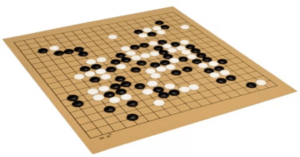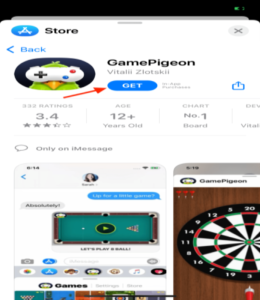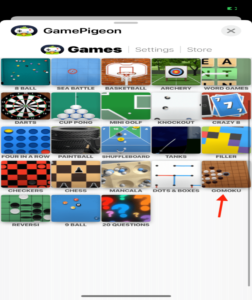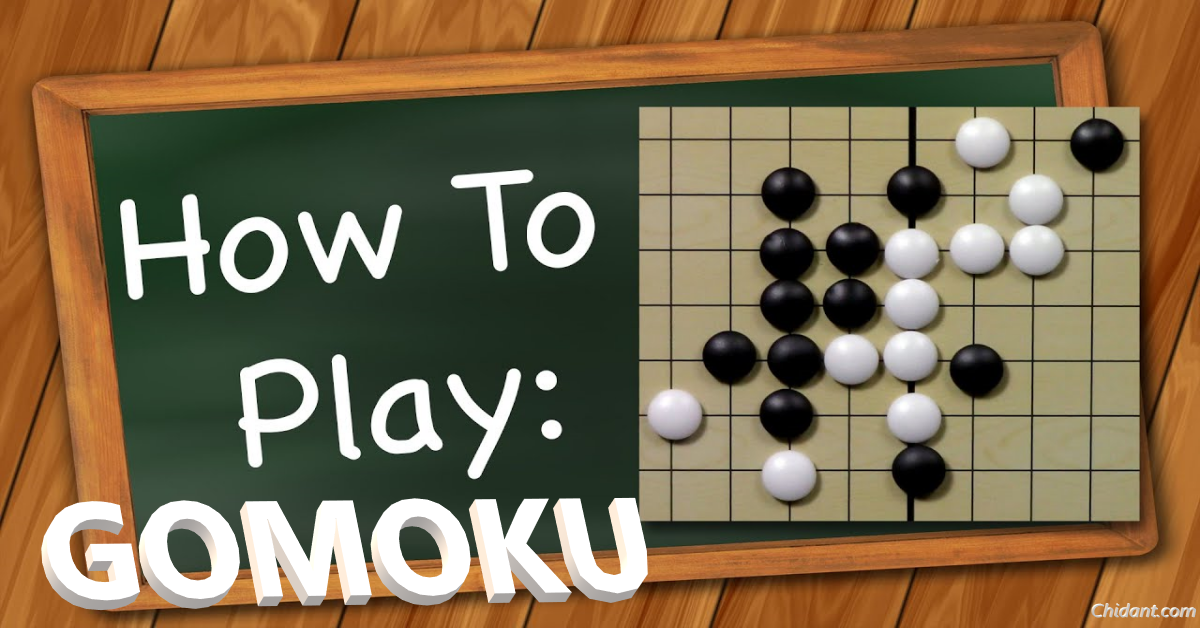How to Play Gomoku – Learning the rules of Gomoku, such as winning patterns and prohibited hands, isn’t enough; you’ll also need a plan if you want to keep winning.
As such, we’ve laid down all the rules and guidelines for playing Gomoku, as well as the strategies and instructions, in this piece.
Gomoku is certainly an enjoyable activity because it combines pleasure, entertainment, and intellectual challenge.
Also, it’s challenging enough to keep you from giving in to sloth but not so much so that you can’t give your brain a good workout.
This chess-like strategy game may not be as straightforward as it first appears because you’ll need to predict your opponent’s movements while you make your own.
Further, if you let your mind wander while playing Gomoku, your opponent will eventually discover a way to outsmart you and take the win.

What is Gomoku?
Gomoku, a classic Japanese board game for two players, is much like tic-tac-toe but much more complicated.
The name Gomoku is from the Japanese language, in which it is referred to as gomokunarabe (五目並べ). Go means five, moku is a counter word for pieces, and narabe means line-up.
Again, the game is popular in Korea, where it is called omok (오목(五目)), which has the same structure and origin as the Japanese name.
It is said that China is the birthplace of the ancient game known as Wu Zi Qi (五子棋), also variously known as Gomoku, Go-moku, five-in-a-row (in English-speaking countries), and similar names.
The game is traditionally played using Go stones or pieces (black and white stones) on a Go board. While a 19×19 board was the standard in the past, it is now played using a 15×15 board.
While taking turns, players place either black or white pieces on the board, aiming to connect a set of five in a row or diagonally.
Is Gomoku Solved?
Although Gomoku has been solved, it cannot be won when starting from a weak position and having few pieces.
Gomoku Rules
Each player takes it in turn, placing a stone of his or her colour at an empty junction. The first move is to black. One wins if they are the first to line up five stones in any direction (horizontal, vertical, or diagonal).
Any placement that results in a line of more than five stones of the same colour does not count as a win. Overlines are the term for these additions.
How to Play Gomoku
This post will show you three excellent strategies for playing Gomoku:
Strategy 1: Preparing for and Kicking Off the Game
1.0 Evenly distribute the black and white pieces between the two players: Gomoku uses black and white stones. One player gets all black pieces, the other all white.
2.0 Play a black stone to begin the game: The black stone’s player initiates the game by placing one of their pieces. Stones are placed at grid intersections (rather than inside the squares). Standard Gomoku lets you lay your stone at any intersection.
3.0 Take it in turns, but don’t monopolize the game: The two players alternate turns laying stones on the board. The second player plays white after the first player plays black.
4.0 Create a winning line of five identical pieces: You win if you’re the first to line up 5 of your stones. It can be horizontal, vertical, or diagonal.
Strategy 2: Actively Employing a Plan of Action
1.0 Take advantage of your opponent’s pause in thought: In a live game, especially a tournament, each player has 10 minutes for their turn. Think about his/her and your move during his/her time, especially at the finish of a game, to get an advantage.
2.0 Pay special attention to the first ten moves: The game’s genesis determines how it ends since you have fewer options later. It’ll be hard to recover if you’re in a terrible position after ten moves.
3.0 Recognize the tactics and advantages of your rival: Learn your opponent’s Gomoku strategy if playing live. Determine if they’re defensive or aggressive.
If you’ve played them before, remember if they employed sequences you could foil. Ask other gamers for further info.
4.0 Prevent your opponent from opening 4: An “open 4” is a line of four stones with no stones at either end of the line.
If a player gets an open 4, their opponent can only block one end during their turn, leaving the other end open for them to win the game.
Block any two-end 3-stone lines immediately to stop your opponent from forming an open 4. (known as an “open 3”). As a result, you will have a better chance of avoiding any potential disastrous outcomes.
5.0 The most aggressive tactics involve simultaneously establishing two lines of assault: A “fork” occurs when there are two viable paths to victory for the stones simultaneously.
Forks are more difficult to defend against because they force your opponent to deal with many attacks at once.
If you want to win, always find ways to unblock overlapping lines at either end.
6.0 Learn from the moves of more skilled players: Try looking at any walkthroughs or gameplay videos on YouTube to see how the pros handle certain situations.
But don’t just watch; pause after each action and think about what might have prompted it. It would be best if you investigated whether or not they have a comprehensive plan.
As you get better, you’ll be able to pause before making a move and consider how you’d react if put in that circumstance.
Strategy 3: Acquiring a Variety of Openings through Practice
1.0 For more balanced gameplay, try the Pro rules: When playing the Pro version, the initial stone must be placed at the board’s centre intersection by the starting player (black). White, the second player, can place their piece wherever they please.
Then, the black’s second stone must be placed at least three intersections from the first (i.e. outside a 5×5 square from the centre of the board).
In the remaining moves, either player may place a stone at any unoccupied junction.
2.0 Kick things off with the Swap twist to level the playing field: The first player in a game of Gomoku using the Swap variant begins by placing one white and two black stones wherever on the board.
The second player might assign white and black for the rest of the game. If you’re White, it’s your turn to play, and you’ll add another White piece to the board.
Afterwards, each player turns it in, placing a stone at the next available junction.
3.0 Get better at playing professionally by mastering the Swap2 opening: One way to begin a game using the Swap2 variant is for the first player to set one white stone and two black stones at random on the board (just the same as the normal Swap opening).
After that, the second player might place two more stones (one black and one white) on the board or play with a stone of either colour. If the second player agrees to set these extra stones, the first player gets to pick which colour to play.
The game continues normally from there, with white laying the next stone and the players taking turns until someone gets five in a row.
How to Improve your Gomoku Playing Skills
The following tips will help improve your Gomoku playing skills and make you a better player:
- Recognize your rival’s strengths and weaknesses.
- Challenge yourself by competing against more skilled gamers.
- Recognize your weaknesses by analyzing the games of champions.
- Learn how to outsmart your opponent in training.
- Recognize your shortcomings and work to improve them.
- Spend more time competing in actual, live competition.
- Keep your guard up, block their four, and then decide.
- Leverage the slowness of your opponent.
- Never play blindly; evaluate the board position after your opponent has made a move.
- Think things through and stick to/make changes to your plan.
- Plan for the game’s future progression and look for a move to aid you later.
- If you’re playing a long game in person, attempt to clear your head while your opponents take their time.
- Think outside the box.
- Nonetheless, the opening ten moves of the game are crucial and should receive extra focus and care.
- Get yourself physically and mentally ready.
- Have fun, be courteous, learn to appreciate your opponent’s play, and you’ll soon be rewarded with a more fulfilling experience.
How to Install Gomoku in iMessage
- Launch the iMessage app on your iOS device and start a new chat. You can do this in an already-running chat or by initiating a brand-new one.
- Tap the “App Store” icon to the left of the text field once the conversation thread has opened. In doing so, the submenu with the iMessage app choices will appear.
- Select the App Store icon from the available options.
- Try typing “GamePigeon” into the search bar. Gomoku is only one of many 2-player games available in the GamePigeon collection, which can be played in iMessage.
- Select “Get” to proceed. By doing so, you can include GamePigeon in your collection of iMessage applications.

How to Play Gomoku in iMessage
- Close the App Store window once GamePigeon has been installed, and then return to the iMessage App Drawer.
- You may access GamePigeon by swiping left or right in the iMessage app drawer.
- The GamePigeon features a large library of playable games accessible via the Games menu. Select Gomoku by swiping down.
- You can play Gomoku in the message box right after tapping it.
- Invite friends to the game by tapping the Send button. Once the invitation has been sent, the recipient has the opportunity to initiate play.

Historically, the player who gets to move first has a distinct advantage over their opponent. If you want to be the first to play Gomoku with a friend over iMessage, you’ll need to insist on being invited.
Lastly, you may have a lot of pleasure, amusement, and mental challenge with Gomoku. It’s tough enough that you won’t get bored and provides a healthy dose of mental exercise.
Also see: Best iPad Games (2023 Guide)
We hope you find this information helpful. Please use any of the share buttons below to share this information.
Feel free to drop any questions or contributions regarding this article in the comment section below.

